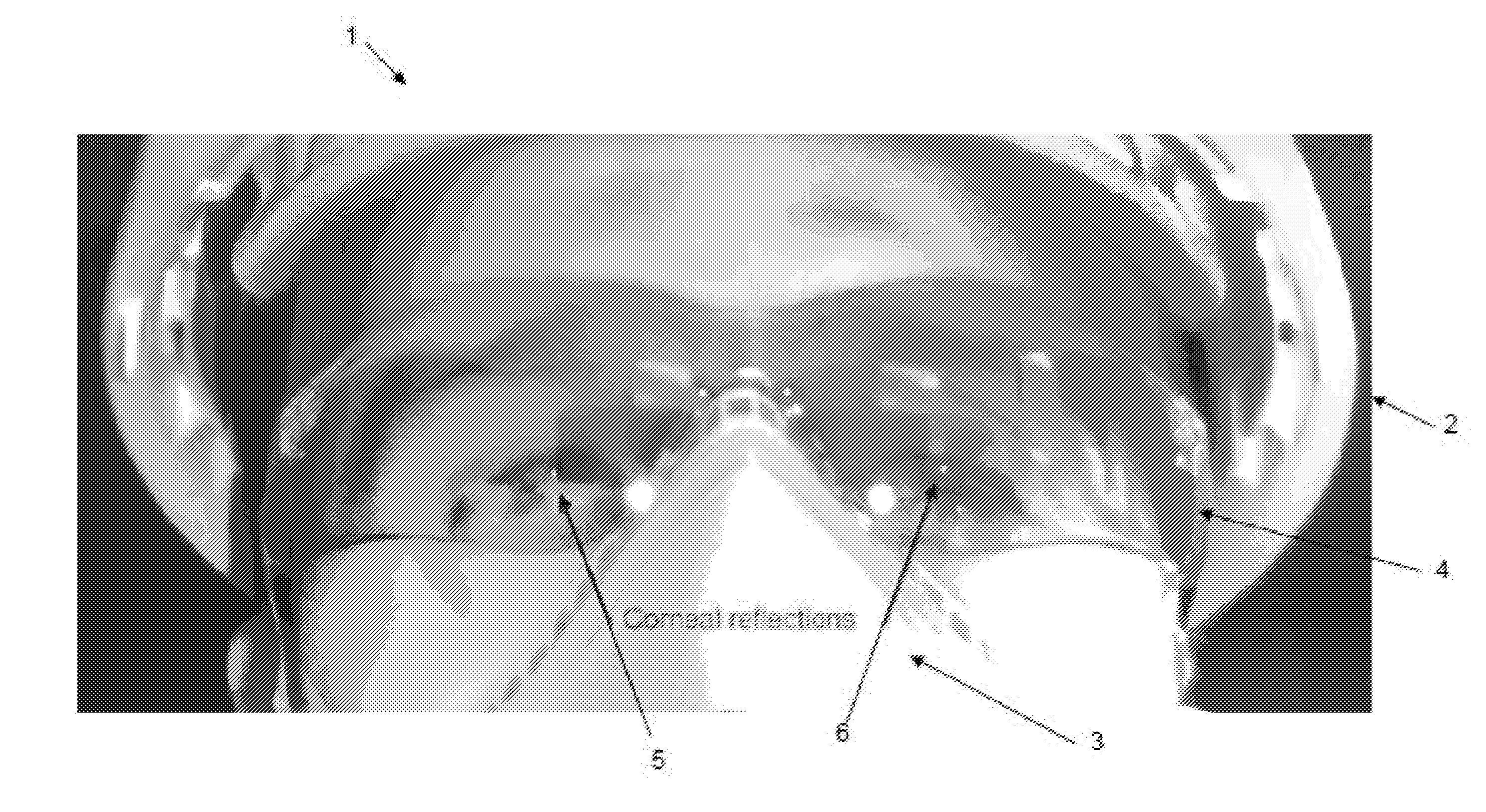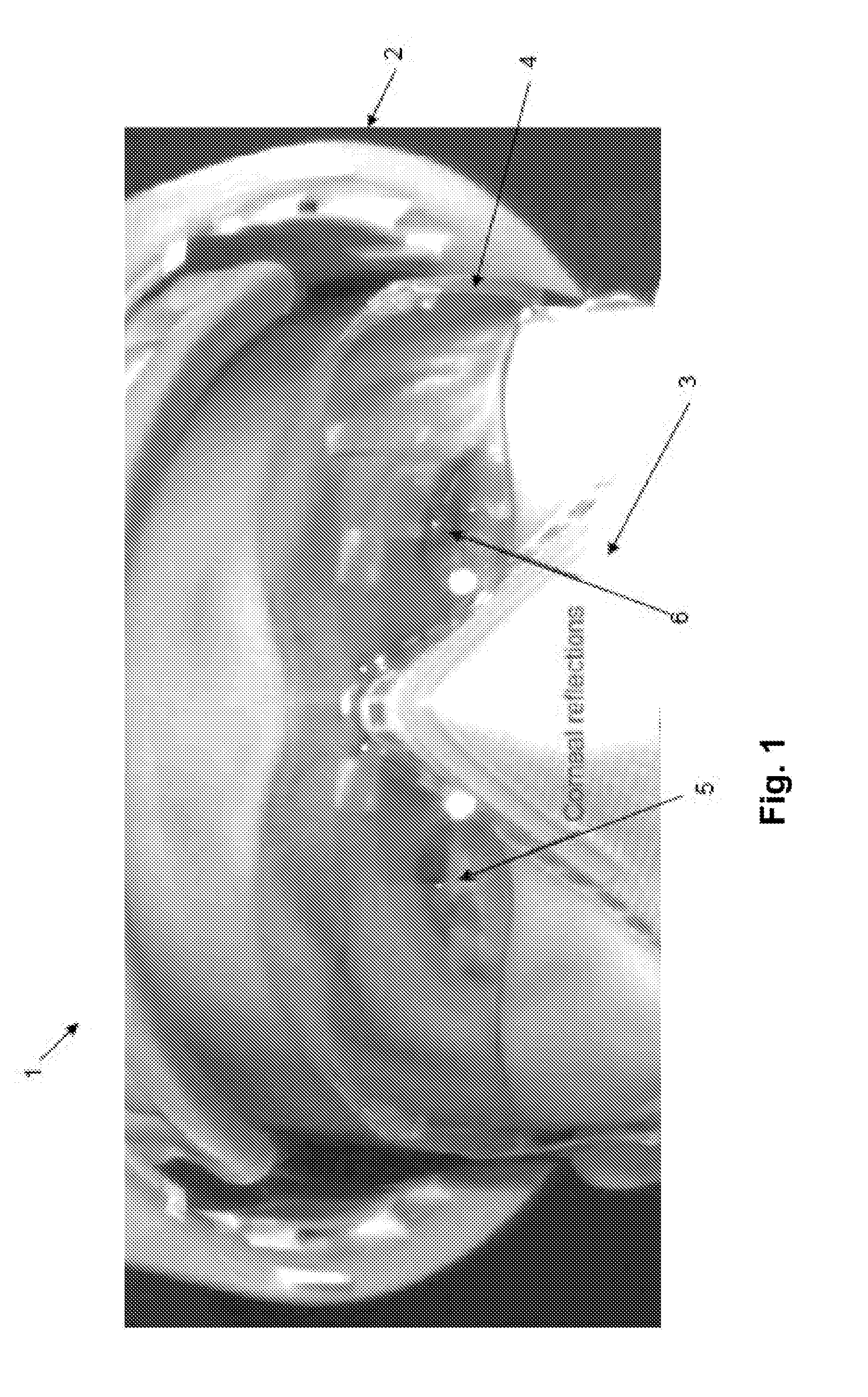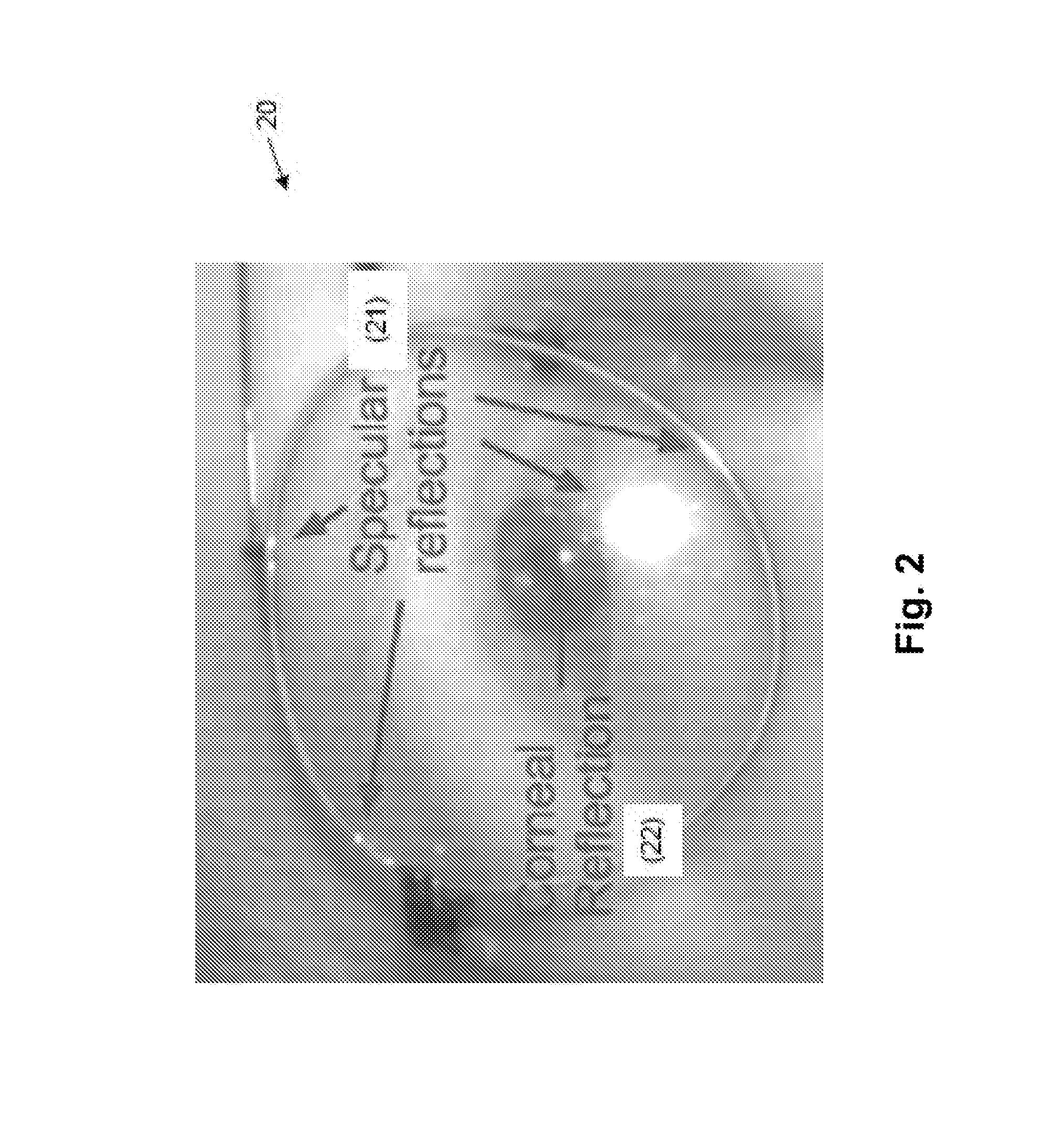Method and apparatus for eye detection from glints
a technology of reflection structure and eye detection, applied in the field of object detection and monitoring, can solve the problems of significant deformation of robustness, difficult to detect eyes in noisy images, and relatively computationally intensive methods
- Summary
- Abstract
- Description
- Claims
- Application Information
AI Technical Summary
Benefits of technology
Problems solved by technology
Method used
Image
Examples
Embodiment Construction
[0033]The preferred embodiment provides a robust form of eye detection through the utilisation of the corneal reflection in a captured image. As the corneal reflection from the eye is usually still present, even in the presence of other strong reflections and noise, the detection and processing of corneal reflection location can provide a strong indicator of eye position and gaze.
[0034]FIG. 1 illustrates an example noisy image 1 of a human head including hat 2, safety glasses 4 and air mask 3. From close examination of the image 1, it can be seen that two corneal reflections 5, 6 are also present in the image.
[0035]FIG. 2 illustrates a second example image of an imaging device recording a view of a single eye having glasses 20. In this example, the light source produces a number of specular reflections 21, in addition to a targeted corneal reflection 22.
[0036]In the preferred embodiment, the presence of corneal specular reflections is utilised to advantage. The preferred embodiment ...
PUM
 Login to View More
Login to View More Abstract
Description
Claims
Application Information
 Login to View More
Login to View More - R&D
- Intellectual Property
- Life Sciences
- Materials
- Tech Scout
- Unparalleled Data Quality
- Higher Quality Content
- 60% Fewer Hallucinations
Browse by: Latest US Patents, China's latest patents, Technical Efficacy Thesaurus, Application Domain, Technology Topic, Popular Technical Reports.
© 2025 PatSnap. All rights reserved.Legal|Privacy policy|Modern Slavery Act Transparency Statement|Sitemap|About US| Contact US: help@patsnap.com



